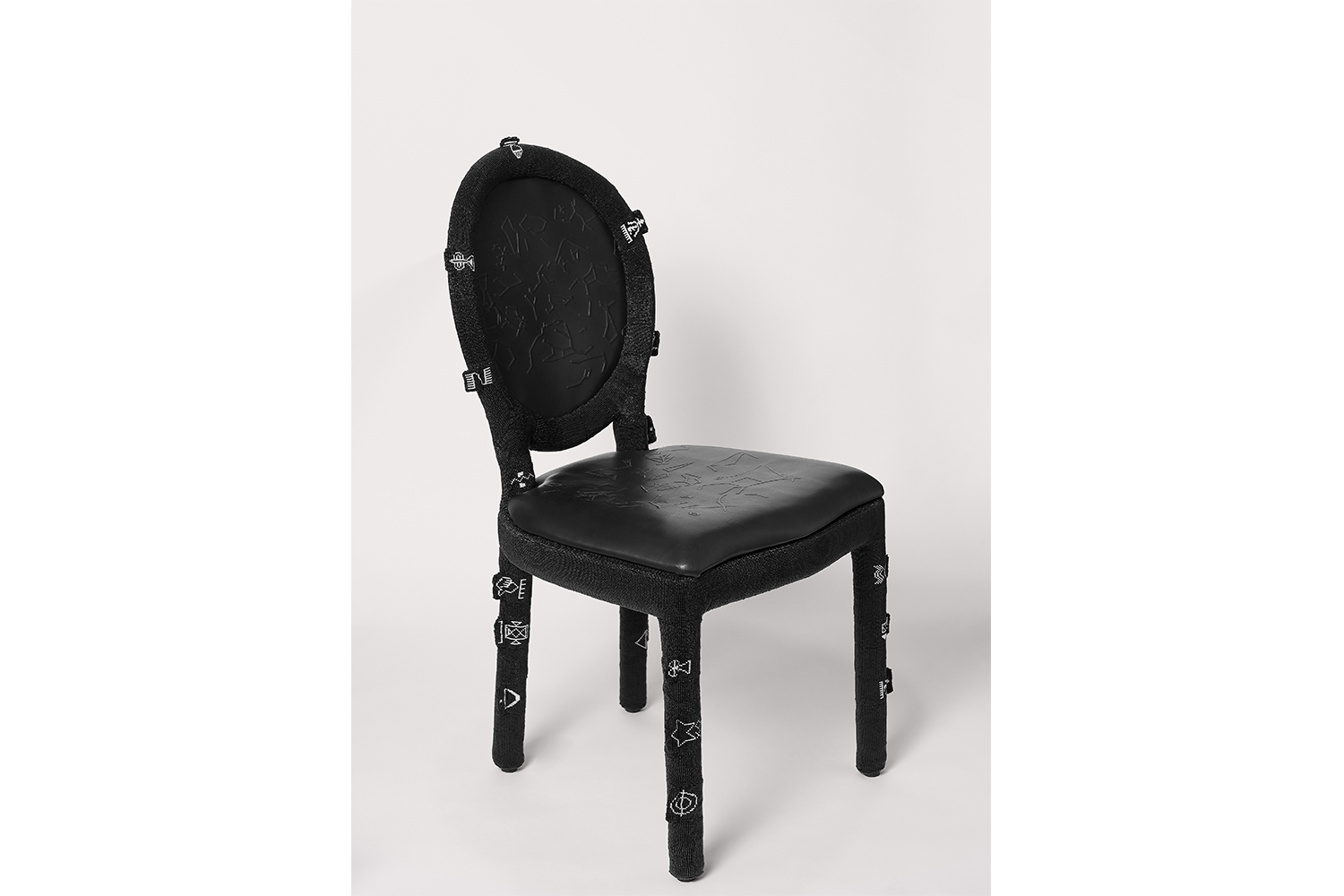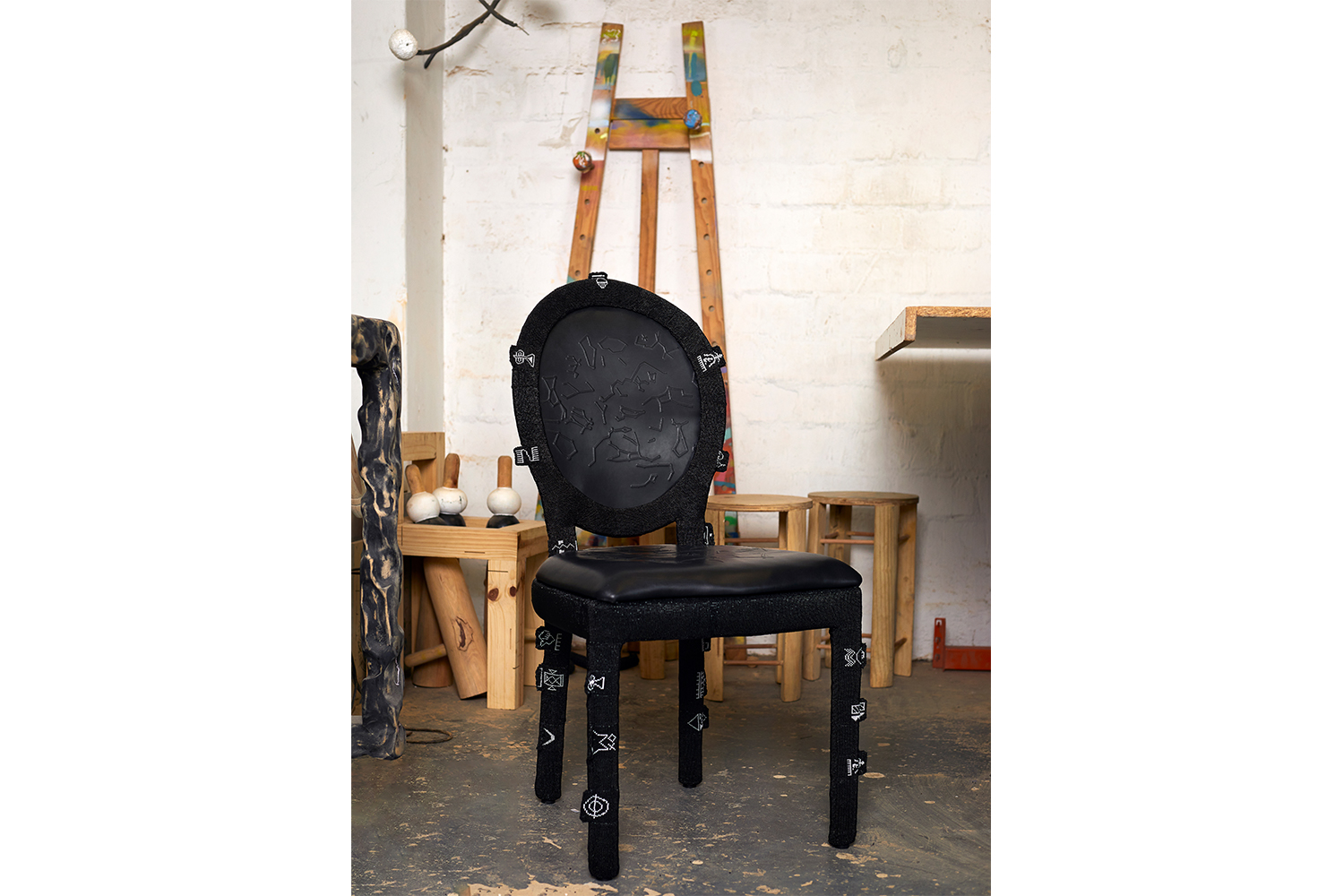
Milan – In occasion of the Salone del Mobile, Dior invited seventeen artists to reinterpret ‘the medallion chair’ – emblematic design object for Louis XVI and later on for Christian Dior. The fashion house selected the medallion chair to represent its style and welcome their guests during shows. Today, Sam Baron, Nacho Carbonell, Pierre Charpin, Dimorestudio, Khaled El Mays, Martino Gamper, Constance Guisset, India Mahdavi, Nendo, Joy de Rohan Chabot, Linde Freya Tangelder, Atang Tshikare, Seungjin Yang, Ma Yansong, Jinyeong Yeon, Tokujin Yoshioka and Pierre Yovanovitch, offer their international and cultural sensibility by transferring their work onto the medallion chair.
How did you reinterpret the chair?
Khaled El Mays: In the first stage, the original chair was respected, the proportions were acknowledged and the intervention was meant to enhance them with subtle details that reflect a fused vision between how I see things in relation to Dior and visual language from the ’50s. The result is a highly detailed Louis XVI chair.
In the second stage, the chair erupted. It needed to morph and evolve to reach a higher level of purpose. The result is a valet chair that grew in function and height.
In the third stage, the chair was reinvented, the whole shape and function changed and evolved in order to propose a whole new look and function. The result is a bench.

Seungjin Yang: I wanted to recall a chair that is simple yet unique and fun. Blowing Series started from an intention to transform undefined forms of balloons into a sculpture through my own interpretations. My work developed from studying the simple act of blowing up balloons and their resulting form and volume. Then it became a process of producing balanced structures and rigid textures out of an unstable material: a balloon. After coating the blown-up balloon with epoxy resin eight times, I assembled each of them.
Martino Gamper: I reduced and removed some of the layers and historical complexity of the medallion chair to improve the comfort and to create a contemporary portrayal of this famous object.
Ma Yansong: My design aims to capture the moment when the classic medallion chair passes through time, transitioning from the historic past into the future.
ìJingyeon Yeon: I took the silhouette of the medallion chair and reinterpreted it as a fragile and collapsing form of formative language, mainly employing used materials. The two chairs have many conflicting points and I wanted to present the chair in two different styles. The chair is made of pipes and I wanted to express the beauty and boldness of the medallion chair using checker plate with a minimalist silhouette and delicate lines.

Tokujin Yoshioka: I tried to create an artwork that illustrates the history and future that the people of today haven’t experienced, and that also offers a certain idea of the future.
Sam Baron: The basic concept was to turn it from a “solitary” and isolated chair into a piece that celebrates gathering and conviviality. The outdoor version is available as a swing, a rocking chair for two, while the indoor version makes it possible for two or four people to sit together.
Pierre Yovanovitch: I reconsidered this piece as a duo, as if the medallion chair had been split in half. Like a real-life couple, these two objects resemble each other intrinsically, but their personalities differ. I used thick, rugged, textured steel to remove the chair from its historical context. I wanted to make the work a little rebellious and contemporary. For the fabric, I thought it would be fun to take the Dior Oblique canvas from the 1970s and reinvent it with new colors and embroidery, in collaboration with the prestigious house of Vermont.

Pierre Charpin: The chair is made of a steel structure, covered with black lacquered resin, while the seat is a mirror, creating a strong contrast.
Nendo: We used tempered glass and, working with collaborators, spent a huge amount of time cutting and bending it to create the circular form.
Nacho Carbonell: I scaled down the medallion backrest and seat and reunited them to recreate the original contours, shape, and size of the medallion chair. It was an exercise in pixelating the object in order to analyze it in a fragmented way. This concept allows for reinterpretation and change yet preserves the essence of the object.
Linde Freya: At each stage of the process, from printing shapes and materials to sketching and reinterpreting, the most important thing was to preserve the medallion chair’s elegance. The iconic medallion shape can be found at the back of the chair. All of its angles have been rounded. These soft curves remind me of sanded glass, shaped by the sea. I named the chair Sage after this special grayish color. It refers to the soft silver-like color, the aluminium sanded surface, visible in the chair.
Joy de Rohan Chabot: By retaining the primary codes: the oval form and the grey tonality, I added a bouquet of branches and flowers.
India Mahdavi: I chose to hybridize the medallion chair by communicating a different dimension that would make it edgier and more contemporary.I reupholstered the chair with designs – which I usually develop for my cushion collection – that are crocheted by Indian artisans. This technique gives the design a texture and a depth that takes it elsewhere.
Dimorestudio: When we were commissioned to develop this project, we thought of using a classic Louis XVI chair, with its original appearance, only leaving the structure in natural wood, with the marks and patina accumulated over time.
We wanted to go beyond design and immerse ourselves in the artworld. Then we deconstructed the chair, breaking it and reassembling it with precious clasps, using bronze grafts to recreate missing parts.
Constance Guisset: I tried to imagine a version adapted to contemporary life, which is so packed and pressed for time. The object is still recognizable, with the oval form of its seat. It is a nomadic medallion chair for cluttered interiors, that you can even take with you when you leave if you want.


